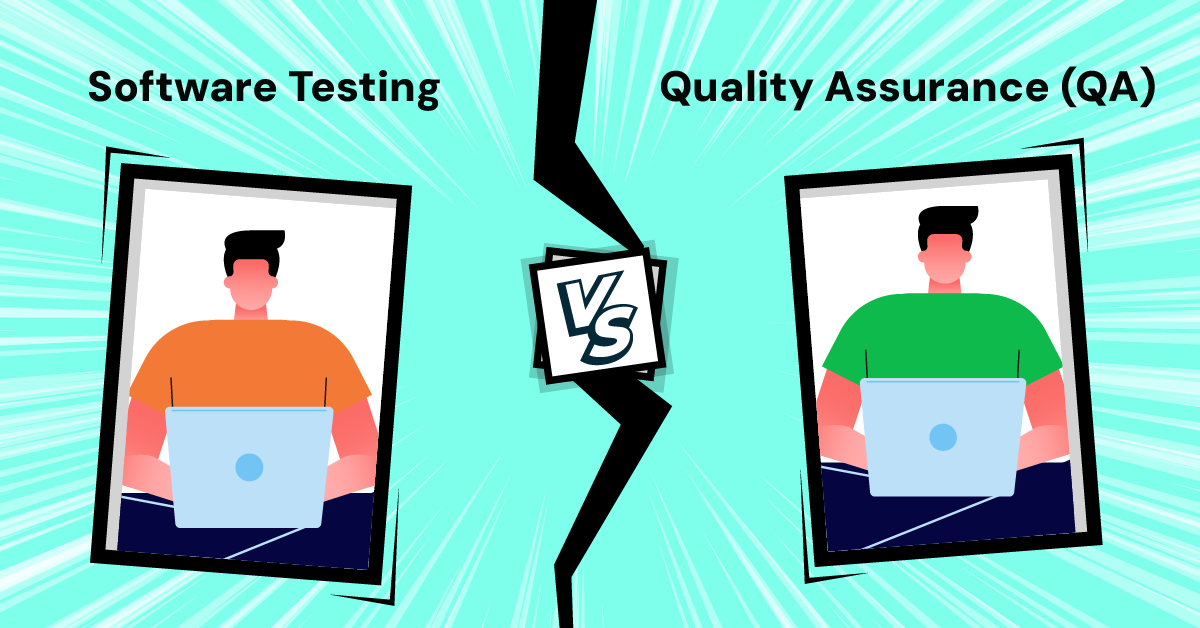
Software Testing vs. Quality Assurance (QA)
Oct 24, 2024 6 Min Read 5405 Views
(Last Updated)
When it comes to making computer programs and apps, two important things are making sure they work right and making sure they’re awesome. Let’s look at how these two jobs—Testing and Quality Assurance (QA)—help with that.
Testing involves doing different checks on the program. We do this in different ways, like testing each small part, checking how different parts work together, and ensuring the whole thing does what it’s supposed to. QA is not just about fixing mistakes, it’s about making sure there are fewer mistakes in the first place.
As we keep going in our journey to understand Testing and Quality Assurance, we’ll learn more about how they work together to make sure the computer programs we use every day are not just okay but really, really great. Stick around as we explore how Testing and Quality Assurance team up to make software that works well and wows everyone!
Table of contents
- Software Testing vs. Quality Assurance (QA): Understanding the Landscape
- Software Testing
- Quality Assurance (QA)
- Software Testing vs. Quality Assurance (QA): Key Differences
- Software Testing vs. Quality Assurance (QA): Interconnected Roles
- Software Testing vs. Quality Assurance (QA): Measuring Success
- A. Metrics in Software Testing
- B. Metrics in Quality Assurance
- Software Testing vs. Quality Assurance (QA): Challenges and Best Practices
- Conclusion
- FAQs
- What's the main difference between Software Testing and Quality Assurance (QA)?
- Can a project have Software Testing without Quality Assurance, or vice versa?
- Are Software Testing and QA only for big projects, or do they apply to small projects too?
Software Testing vs. Quality Assurance (QA): Understanding the Landscape
Let’s learn the key concepts in software testing and quality assurance:
Software Testing
Software testing is a process of evaluating and verifying that a software application or system functions as intended. The primary goal of software testing is to identify any defects or errors in the software and ensure that it meets the specified requirements. Testing is an essential part of the software development life cycle and is performed at various stages to ensure the delivery of a high-quality product.
Software testing involves the execution of a software or application to identify any gaps, errors, or missing requirements in contrast to the actual requirements. The process helps ensure that the software is reliable, efficient, secure, and free of critical issues before it is released to end-users.
There are different levels of software testing, including unit testing, integration testing, system testing, and acceptance testing. Each level of testing has its specific focus and objectives. Additionally, various testing techniques, such as manual testing and automated testing, are employed to validate different aspects of the software.
Software testing is a crucial activity that aims to identify and rectify defects in software, ensuring that the final product meets the specified requirements and is of high quality.
There are various types of software testing, including:
- Unit Testing: Involves testing individual components or functions in isolation to ensure they function correctly.
- Integration Testing: Focuses on testing the interactions and interfaces between integrated components to identify issues in their combined functionality.
- System Testing: Evaluate the complete system’s functionality to ensure it meets the specified requirements and behaves as expected.
- Acceptance Testing: Validates whether the software meets the user’s acceptance criteria and is ready for deployment.
- Regression Testing: Verifies that recent code changes haven’t adversely affected existing functionalities.
- Performance Testing: Assess the system’s responsiveness, stability, and scalability under varying conditions to ensure optimal performance.
- Security Testing: Identifies vulnerabilities and weaknesses in the software to ensure robust protection against security threats.
- Usability Testing: Evaluate the software’s user interface and overall user experience to ensure it is user-friendly.
- Compatibility Testing: Ensures the software functions correctly across different devices, browsers, and operating systems.
- Load Testing: Examines the system’s performance under anticipated load conditions to identify potential bottlenecks and weaknesses.
- Stress Testing: Pushes the system beyond its specified limits to assess its stability under extreme conditions.
- Exploratory Testing: Involves simultaneous learning, test design, and execution to discover defects in an ad-hoc manner.
These testing types contribute to enhancing the reliability and effectiveness of the software.
Also Read: Manual Testing Vs Automation Testing! [DETAILED]
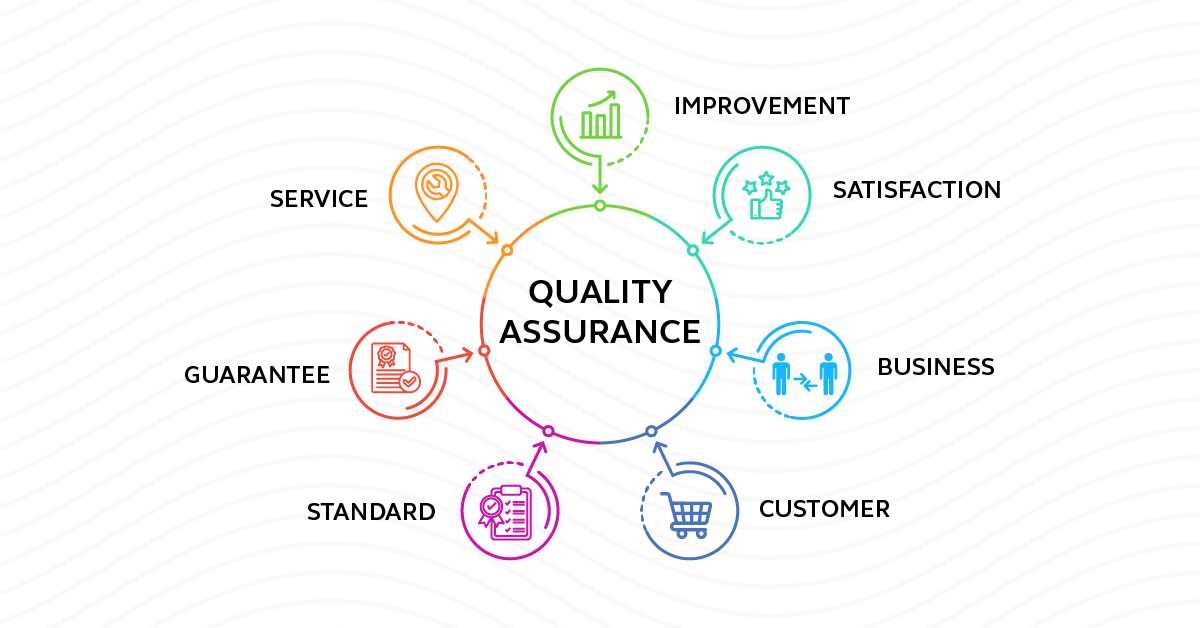
Quality Assurance (QA)
Quality Assurance (QA) is a systematic process that ensures the quality and reliability of a product or service throughout its development life cycle. It involves establishing and adhering to standards and procedures to prevent defects and verify that the product meets specified requirements. QA encompasses activities such as process improvement, defect prevention, and continuous monitoring to ensure that the development and testing processes are effective in delivering a high-quality end product.
The types of Quality Assurance (QA) are as follows:
- Process-Oriented QA
- Focuses on defining and improving the processes involved in software development.
- Aims to enhance efficiency, reduce defects, and ensure consistency in development practices.
- Product-Oriented QA
- Concentrates on the final product’s quality and adherence to specified requirements.
- Involves activities such as inspections, reviews, and testing to validate the product against predefined criteria.
- QA through Reviews
- Involves systematic examination of project documents, code, and other artifacts to identify defects and ensure compliance with standards.
- Reviews can include walkthroughs, inspections, and peer reviews.
- Statistical QA
- Utilizes statistical techniques to analyze and control the quality of processes and products.
- Metrics and statistical tools are employed to monitor and improve the development process.
- Audit-Based QA
- Involves independent assessments and audits to evaluate whether the established processes are being followed.
- Helps identify areas for improvement and ensures compliance with organizational standards.
- Training and Education
- Focuses on providing training and education to the development team to enhance their skills and awareness of quality standards.
- Aims to build a culture of quality within the organization.
- Tool-Supported QA
- Involves the use of automated tools to enforce coding standards, perform static analysis, and conduct various types of testing.
- Tools help streamline QA processes and improve efficiency.
- Management-Oriented QA
- Involves management activities such as strategic planning, resource allocation, and project management to ensure that quality objectives are met.
- Aligns QA activities with overall organizational goals.
- Continuous Improvement
- Emphasizes an ongoing commitment to identifying opportunities for improvement in processes and products.
- Involves feedback loops, lessons learned, and a culture of continuous learning.
- Customer-Oriented QA
- Focuses on meeting and exceeding customer expectations by understanding and fulfilling their requirements.
- Customer feedback is actively sought and incorporated into the QA process.
Effective QA practices contribute to the delivery of high-quality software, reduce the likelihood of defects, and increase customer satisfaction. It is an integral part of the software development life cycle aimed at building and maintaining reliable and efficient processes.
Also Read: Best Books to Learn Software Automation Testing Engineering
Before we proceed further, it’s essential to have a solid foundation in automation testing principles and selenium basics. If you’re eager to dive deep into software testing, consider joining GUVI’s Selenium Automation Testing Course. In this program, you’ll learn the fundamentals of Selenium, Python, Java, Jenkins, Jmeter, API Testing, and more. Gain hands-on experience with industry-standard tools and techniques to get into a professional career focusing on the quality of Product & Process development.
Also, if you want to explore Automation Testing with Python through a Self-paced course, try GUVI’s Selenium Automation with Python certification course.
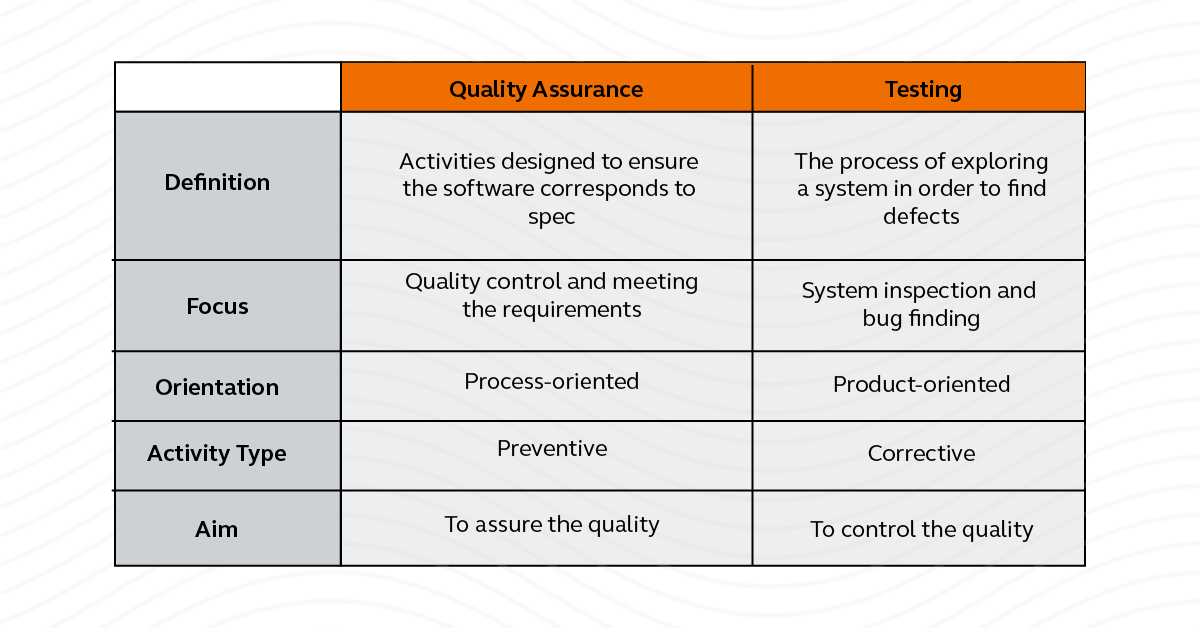
Software Testing vs. Quality Assurance (QA): Key Differences
While software testing is primarily concerned with validating the software’s behavior and identifying defects after development, quality assurance takes a broader approach, focusing on process improvement and ensuring quality from the early stages of the development lifecycle.
Let’s elaborate on the key differences between Software Testing and Quality Assurance:
| A. Focus and Goals | Software Testing | Quality Assurance (QA) |
| 1. Identifying Defects | Primarily focused on executing test cases to uncover defects or bugs in the software. Involves checking if the actual behavior matches the expected behavior. | Concentrates on improving and optimizing the software development processes. Aims to enhance the overall quality of the software by refining development practices. |
| 2. Ensuring Functionality | Verifies that the software functions as intended and meets the specified requirements. Main goal is to ensure that the software performs its intended tasks without errors. | Focuses on preventing defects rather than identifying them post-development. Involves establishing quality standards and processes to be followed throughout the development lifecycle. |
| B. Timing in the Software Development Lifecycle | Software Testing | Quality Assurance (QA) |
| a. Phase | Typically conducted after the development phase. Involves validating and verifying the developed software against requirements. | Implemented before and during the development phase. Focuses on setting up processes and standards to ensure quality from the beginning. |
| b. Approach | Identifies and fixes defects that may have been introduced during the development process. Reactive in nature, addressing issues after they occur. | Aims to prevent defects by implementing effective processes, standards, and continuous improvement strategies. Takes a proactive stance in enhancing overall development practices. |
Software Testing vs. Quality Assurance (QA): Interconnected Roles
Collaboration, effective communication, and integration are crucial for creating a streamlined and efficient software development process. These practices enhance the overall quality of the software by addressing defects early in the development lifecycle and promoting a culture of continuous improvement.
Let’s explore the interconnected roles and collaboration between Software Testing, Quality Assurance (QA), and Development:
| Software Testing | Quality Assurance (QA) |
|---|---|
| Focus Area | Focus Area |
| – Identifies defects through test execution. | – Concentrates on process improvement and |
| – Ensures software functionality. | – setting standards for quality. |
| Responsibilities | Responsibilities |
| – Test planning, execution, and defect reporting. | – Defines and implements processes and promotes best practices. |
| – Involves executing test cases to find defects. | – Conducts audits to ensure compliance. |
| Communication Channels | Communication Channels |
| – Regular meetings for project progress and shared documentation and test plans.. | – Collaboration with development and testing teams through meetings. |
| Integration with Development | Integration with Development |
| – Continuous communication with developers and automated testing scripts integrated for continuous testing. | – Works hand-in-hand with developers, ensuring seamless workflow and Agile practices. |
| – Early involvement in the development process. | – Provides feedback on code quality and suggests improvements. |
| Workflow | Workflow |
| – Focus on executing test cases and ensuring to standards and prevention of defects. | – Emphasizes process improvement, adherence to standards and prevention of defects. |
| – Detects defects at various stages of software development life cycle. | – Collaborates with development and testing teams for a holistic quality approach. |
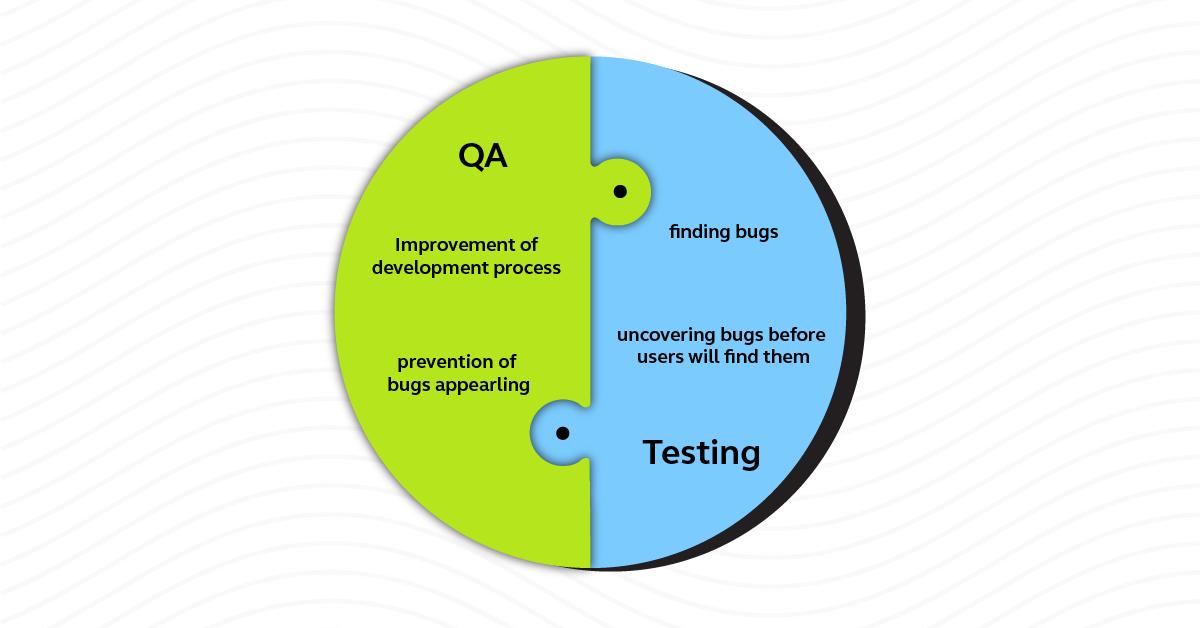
Software Testing vs. Quality Assurance (QA): Measuring Success
Let’s learn the key metrics for measuring success in both Software Testing and Quality Assurance:
A. Metrics in Software Testing
Defect Density
Definition: The number of defects identified in a specific module or software component divided by the size or volume of that module.
Purpose: Indicates the quality of the code and identifies areas that may require more attention.
Test Coverage
Definition: The percentage of the code or functionalities covered by the executed test cases.
Purpose: Measures the effectiveness of testing in ensuring that critical areas of the software are tested.
Test Pass Rate
Definition: The percentage of test cases that pass successfully.
Purpose: Provide insight into the stability and reliability of the software.
B. Metrics in Quality Assurance
Process Adherence
Definition: Measures how well teams adhere to established processes, standards, and best practices.
Purpose: Ensures consistency and reliability in the development process.
Customer Satisfaction
Definition: Feedback and satisfaction scores from end-users or customers.
Purpose: Reflects the success of the software in meeting user expectations and needs.
Continuous Improvement
Definition: Measures the effectiveness of ongoing efforts to enhance processes and practices.
Purpose: Demonstrates the commitment to learning from experiences and optimizing the development lifecycle.
These metrics play a crucial role in assessing the success of testing and quality assurance efforts, providing valuable insights for improvement and ensuring that the software meets quality standards and user expectations.
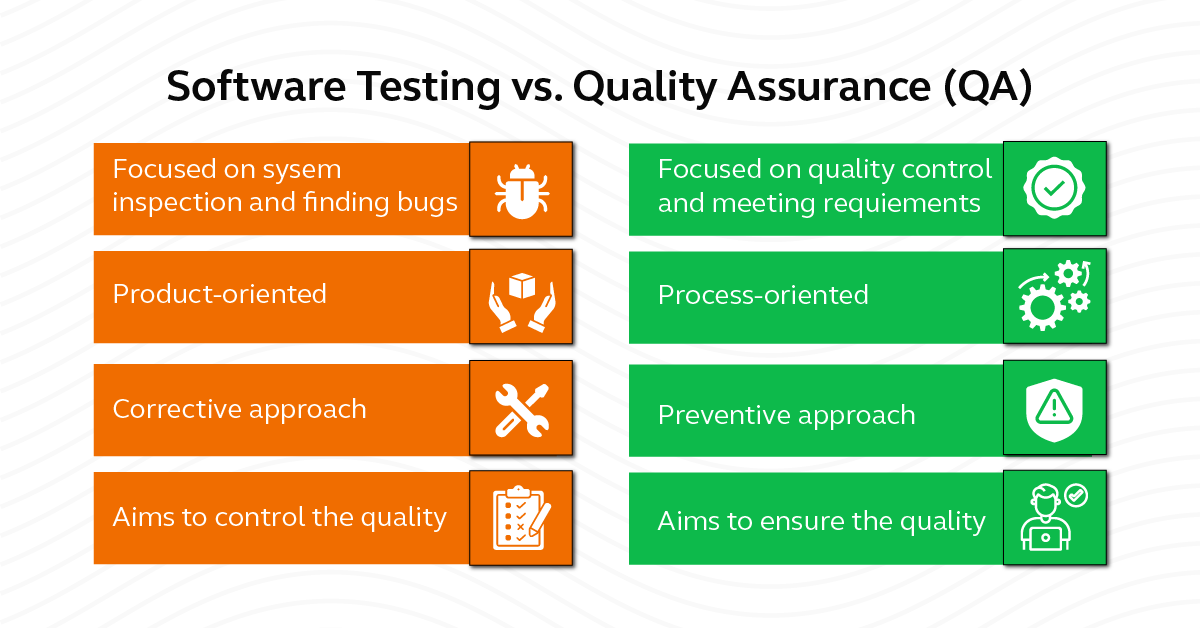
Software Testing vs. Quality Assurance (QA): Challenges and Best Practices
Let’s explore common challenges in Software Testing and best practices in Quality Assurance:
| Aspect | Software Testing | Quality Assurance (QA) |
|---|---|---|
| Challenges | – Limited test coverage | – Ensuring consistent adherence to quality standards throughout the development process |
| – Time constraints leading to incomplete testing | – Balancing quality objectives with project timelines and resource constraints | |
| – Managing test data and environments | – Integrating QA into agile or rapid development methodologies | |
| Best Practices | – Comprehensive test planning and documentation | – Establishing and enforcing coding standards and best practices |
| – Test automation for repetitive and time-consuming tasks | – Continuous integration and continuous deployment (CI/CD) pipelines to ensure quick feedback on changes | |
| – Collaboration between development and testing teams | – Implementing robust change management processes to control scope creep | |
| – Performance testing to identify bottlenecks and optimize system performance | – Regular audits and reviews to ensure adherence to quality standards |
It’s important to note that Software Testing and QA are interrelated, and both contribute to the overall quality of a software product. While testing is a subset of QA, QA involves a broader set of activities aimed at preventing defects rather than just identifying and fixing them. Best practices for both involve collaboration, automation, and a focus on continuous improvement throughout the software development lifecycle.
Enroll in GUVI’s Selenium Automation Testing Course to get your software testing career off to a great start. Here, you can master in-demand skills like Selenium, Python, Java, Jenkins, Jmeter, API Testing, and more.
Alternatively, if you want to explore Automation Testing with Python through a Self-paced course, try GUVI’s Selenium Automation with Python certification course.
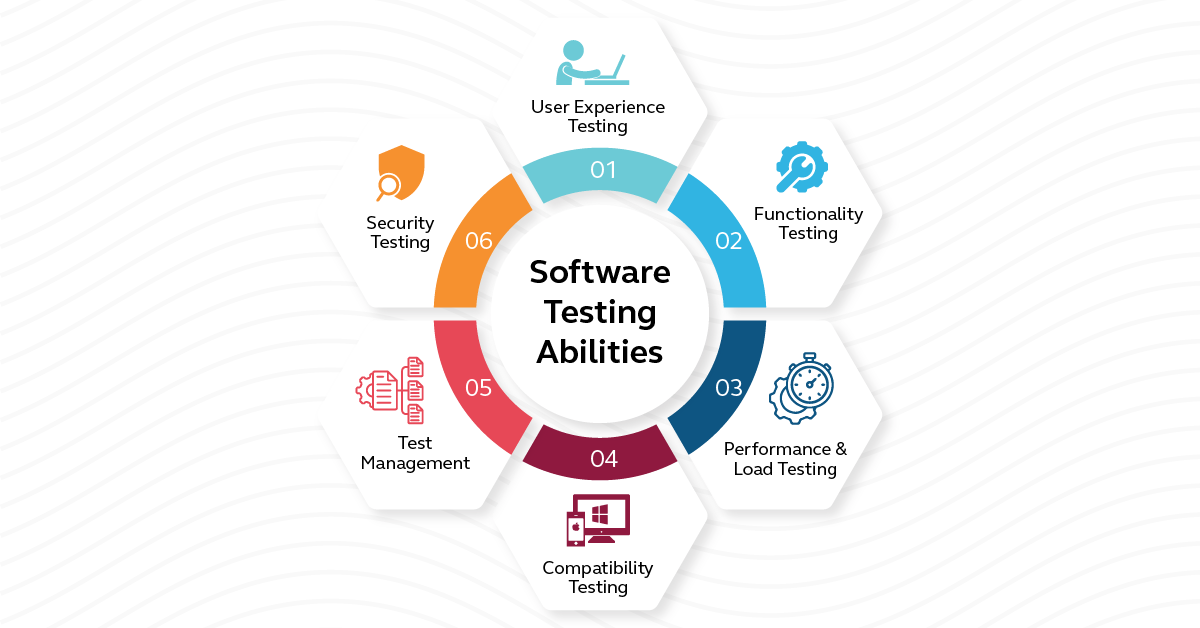
Conclusion
Testing and QA work together like a team. They share information and help each other out. This teamwork ensures that software is not just free of mistakes but is also built correctly.
Things are always changing in the tech world. Now, people are not just fixing mistakes; they’re stopping them from happening in the first place. New tools and ways of working are making software even better.
So, in the end, testing and QA ensure the software is top-notch. As technology grows, so does the way we keep software in check. We can keep up with these changes by working together and creating software everyone loves to use.
FAQs
Software Testing is a detective checking for mistakes after the software is built. It focuses on finding defects and ensuring that the software works as intended.
Quality Assurance (QA), on the other hand, is more like a coach. It’s about making sure the whole process of building software is excellent from the beginning. QA aims to prevent mistakes before they happen.
Yes, a project can have Software Testing without Quality Assurance (QA), and vice versa, but it’s not ideal. While testing can catch mistakes after they occur, QA helps prevent those mistakes in the first place. They work best when together, ensuring a more robust and effective approach to software quality.
Both Software Testing and Quality Assurance (QA) are essential for projects of all sizes. Even small projects can benefit from testing to catch mistakes early, and QA practices can help establish good processes from the beginning. The scale of the project doesn’t diminish the importance of ensuring software is reliable, functional, and built with quality in mind.
















Did you enjoy this article?